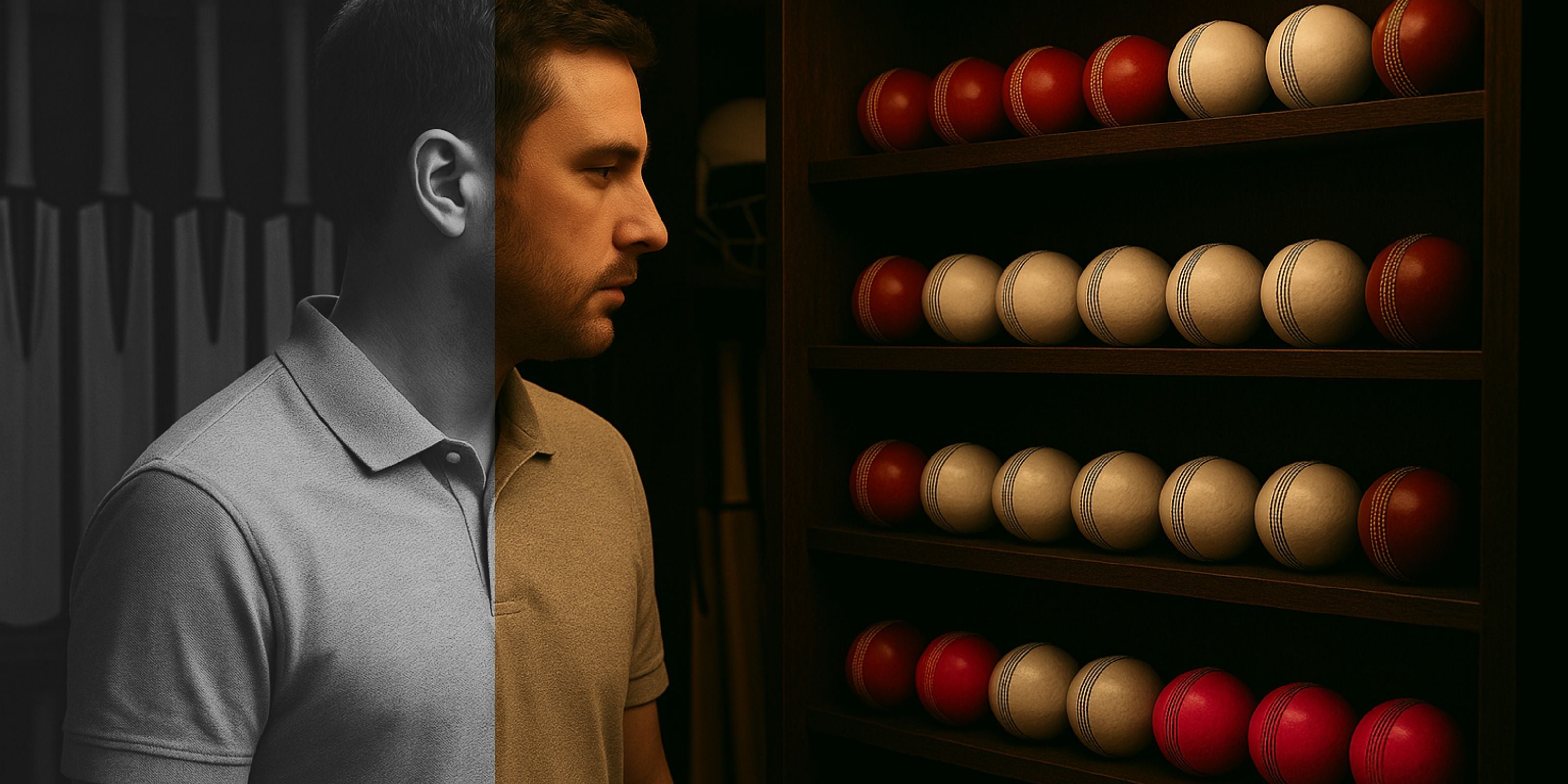
Red vs White vs Pink Cricket Balls
Red vs White vs Pink Cricket Balls: What’s the Difference?
In cricket, the color of the ball plays a significant role in how it behaves during a match. Different ball colors are designed for various formats, playing conditions, and lighting situations. The most common cricket ball colors are red, white, and pink, each offering distinct advantages depending on the time of day, weather, and type of cricket being played. This blog will help you understand how the color of the cricket ball impacts visibility, swing, and ball condition, and why choosing the right one is essential.
1. Red Cricket Ball: Traditional for Test Matches
Visibility:
-
Daylight Visibility: The red ball is designed for traditional Test cricket and is highly visible during the day.
-
When It's Used: Primarily used in longer formats like Test cricket, where matches last for multiple days.
Swing and Movement:
-
Swing: The red ball retains its seam for a longer period and can offer both conventional and reverse swing under natural light.
-
Seam Movement: It holds its condition well for the first 40–50 overs, allowing bowlers to extract swing and seam movement, particularly in the morning or evening when there is more moisture in the air.
Ball Condition:
-
Durability: The red ball tends to retain its shine for longer periods, allowing bowlers to use it effectively throughout a Test match. It provides more consistent bounce as it wears down slowly.
-
When It Gets Worn: The red ball becomes less effective as the match progresses, with the shine fading after 60-80 overs. However, it’s still useful for bowlers who rely on swing and seam.
2. White Cricket Ball: For Limited-Overs Cricket
Visibility:
-
Night-Time Visibility: The white ball is designed for matches played under floodlights, such as T20 and One-Day International (ODI) formats.
-
When It's Used: It is ideal for matches played under artificial lighting, offering excellent visibility to both players and spectators.
Swing and Movement:
-
Swing: The white ball offers more swing in the early overs, but it loses its effectiveness after a few overs due to the wear and tear from constant impact.
-
Seam Movement: The white ball does not offer the same level of seam movement as the red ball. This is because it gets dirty quickly, which affects its ability to move through the air.
Ball Condition:
-
Durability: The white ball’s surface gets dirty quickly, making it harder for bowlers to maintain their grip and control after 20-25 overs. It also tends to lose its shine faster, affecting its swing capabilities.
-
Visibility Issues: As the white ball gets dirty, it becomes harder to spot, especially when playing under lights. The wear and tear also impact its performance, causing bowlers to struggle with maintaining control.
3. Pink Cricket Ball: For Day-Night Test Matches
Visibility:
-
Optimal Visibility: The pink ball was introduced to combine the advantages of both the red and white balls, making it ideal for day-night Test matches.
-
When It's Used: It is typically used for Test matches that start in the afternoon and continue into the night under floodlights. The pink ball offers improved visibility compared to the red ball, especially under lights.
Swing and Movement:
-
Swing: The pink ball offers a balance between swing and seam movement. It provides some of the swing advantages of the red ball but retains the ability to be seen clearly in low light conditions like the white ball.
-
Seam Movement: The pink ball behaves similarly to the red ball, offering swing in the early overs but with the added benefit of visibility under floodlights. However, like the red ball, it also loses its shine after a while.
Ball Condition:
-
Durability: The pink ball is designed to maintain its condition for longer than the white ball. Its color allows it to maintain shine and surface integrity during a day-night match, especially in the evening.
-
When It Gets Worn: Like the red ball, the pink ball offers more consistent bounce and swing for the first 50-60 overs. After that, it loses its shine but continues to be a reliable option for Test cricket.
Key Differences Between Red, White, and Pink Balls
| Feature | Red Ball | White Ball | Pink Ball |
|---|---|---|---|
| Ideal Format | Test Matches | T20 & ODI Matches | Day-Night Test Matches |
| Visibility | Great in daylight | Best under artificial lights | Best in twilight conditions |
| Swing | Excellent in early overs | Good in early overs, fades quickly | Balanced swing, good in both day and night |
| Durability | Long-lasting | Loses shine quickly | Retains shine better than white ball |
| Seam Movement | Excellent | Limited after a few overs | Good seam movement throughout |
Final Thoughts
Choosing the right color cricket ball is essential for optimizing performance during a match. The red ball is perfect for Test matches played during the day, providing excellent swing and seam movement. The white ball is designed for limited-overs formats, offering high visibility under floodlights but losing its effectiveness after a few overs. The pink ball combines the best of both worlds, offering enhanced visibility for day-night Test matches while still providing swing and seam movement.
At Zee Sports, we offer a wide range of cricket balls to suit every format and condition. Explore our collection to find the perfect ball for your game!
_____________________________________________________________
All Zee Sports Cricket Balls Pages Links.
https://zeesports.co/collections/7-star-cricket-balls
https://zeesports.co/collections/sports-balls
https://zeesports.co/collections/tape-tennis-balls
https://zeesports.co/collections/rugby-ball
https://zeesports.co/collections/volley-balls
https://zeesports.co/collections/soccer-balls
https://zeesports.co/collections/balls
https://zeesports.co/collections/cricket-balls
https://zeesports.co/collections/5-star-cricket-balls


Leave a comment
This site is protected by hCaptcha and the hCaptcha Privacy Policy and Terms of Service apply.